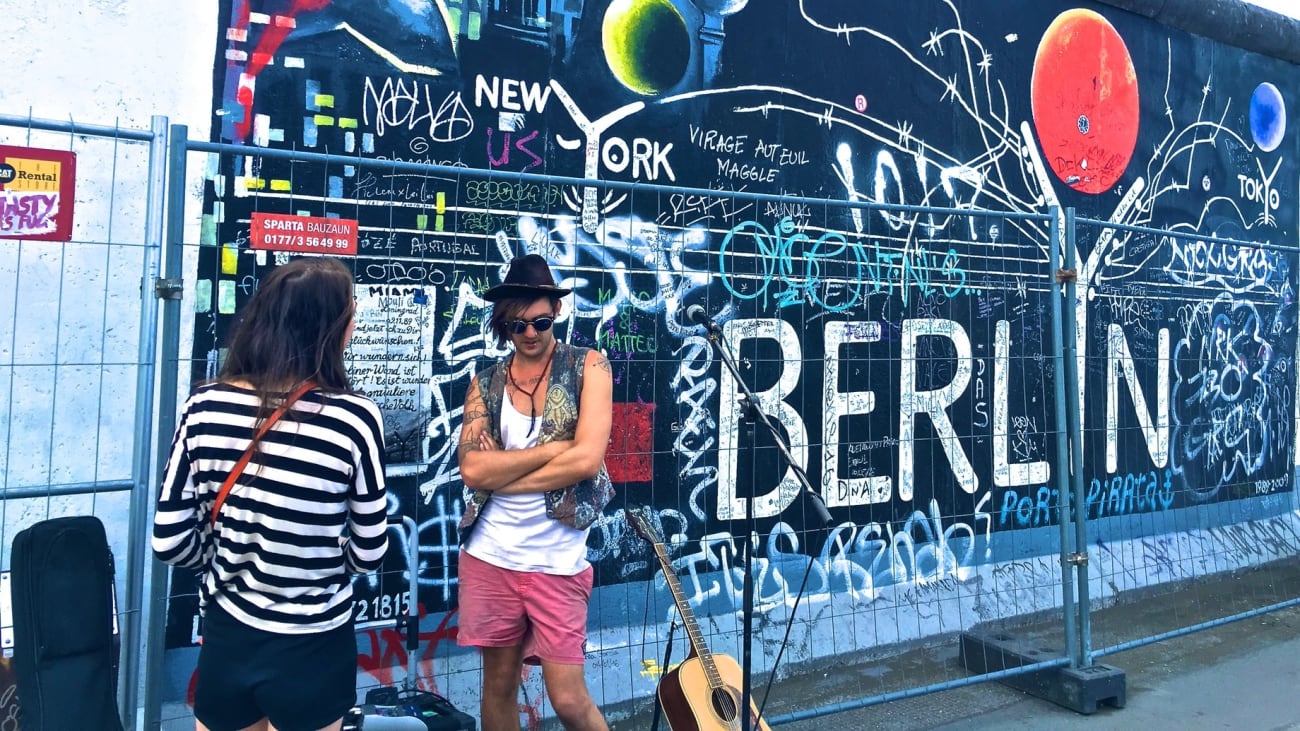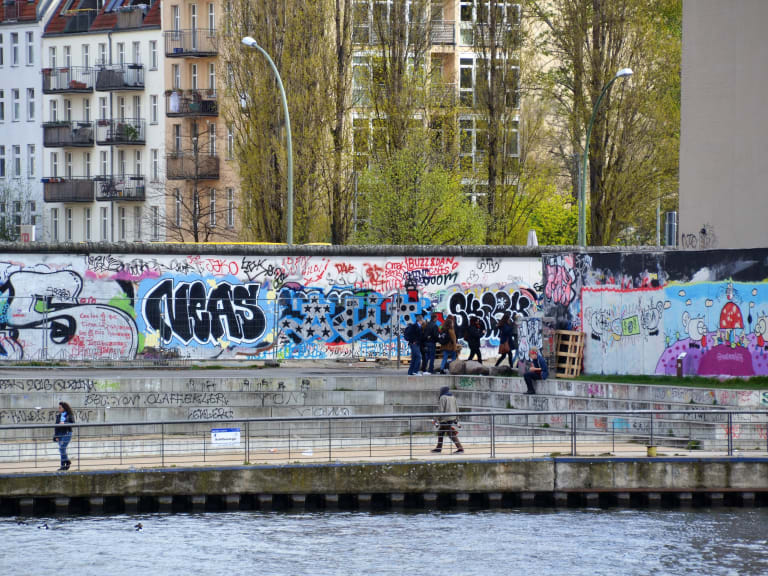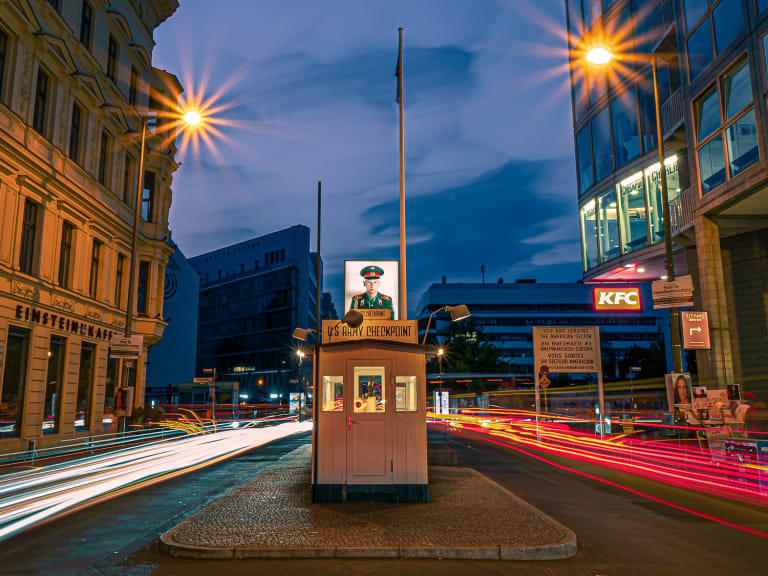Things to Do in Berlin City Center
Berlin is avant-garde, but also history. From the mythical Brandenburg Gate, to the famous border crossing between East and West, to the incredible Museum Island... the center of Berlin is infinite. Enter and let yourself be captivated by the charm of this wonderful city.

Berlin | ©XU CHEN
Multicultural, modern, unique...there are thousands of adjectives to discover Berlin and none manages to capture its uniqueness. Its most important attractions are concentrated in the center and this article aims to reveal to you one of the most interesting routes. Read on and discover the stages!
1. Reichstag and Brandenburg Gate

Completely destroyed during the Second World War, the Reichstag was rebuilt in several phases. After the reunification of the country it once again became the center of German political life and its vault was again erected, this time in glass and steel. According to the intentions of the architect - the very famous Norman Foster - it symbolizes the transparency of the German democratic system. It can be visited by booking a ticket in advance.
Not far from the Parliament is another symbol of the city: the Brandenburg Gate. It is another symbol of German unity after the fall of the Wall and one of the best examples of German classicism. During the Cold War it was located on the east side and remained there until December 22, 1989. On this date, 100,000 people gathered at its feet to celebrate the official opening of the monument and a few days later they celebrated together the first New Year.
If you visit Berlin in summer I recommend a walk to the nearby Tiergarten, the green lung of the city. It is crisscrossed by several tree-lined paths and dotted with meadows and forests. To enjoy a local beer, head to the Café am Neuen See, a restaurant and biergarten surrounded by nature. If temperatures permit, in winter you can skate on the park's small lakes.
2. Relive Germany's recent history

No trip in the German capital would be complete without a walk at the foot of the wall. Between 1961 and 1989, this stone snake divided the city until it was torn down by the Berliners themselves. Today, the part that has survived the cold war is located in Mühlenstrasse, on the banks of the Spree River. Here you will see the famous East Side Gallery, the longest open-air art gallery in the world. Its most famous murals are Bruderkuß (the famous kiss between Honecker and Brezhnev), Test the Best (a Trabant car breaking the wall) and Der Mauerspringer, the "wall jumper".
3. The border crossing between East and West

Checkpoint Charlie is located at the corner of Friedrichstraße and Zimmerstraße. You will recognize it by the American flags, the pictures of two soldiers held by a mast and a hut partially covered by sandbags. During the Cold War, the wall passed here and the atmosphere was very tense. In October 1961, Russian and American tanks came to clash at this very spot. For about 16 hours, the world was on the brink of World War III.
Fans of spy movies and the world divided by the Iron Curtain should not miss the Mauermuseum, a museum opened in 1962. Its collection brings together the most bizarre objects used to enter the western zone. It includes a hot air balloon, motorized kites, a double-bottom car and a mini-submarine powered by a motorcycle engine (Friedrichstraße 43).
4. Alexanderplatz and Potsdamer Platz

Alexanderplatz is the largest square in Berlin. It is named after Tsar Alexander I who visited the kingdom of Prussia in 1805. During the cold war it was on the Soviet side and its buildings tried to rival the buildings in the west. When you are there, you will notice it when you see the Hotel Stadt Berlin (now Park Inn Hotel), the Haus der Lehrers (headquarters of the teachers' commission of the German Democratic Republic) and the Travel House.
Another important and not-to-be-missed landmark is Potsdamer Platz, the old heart of Berlin. After reunification this was a desolate space that was revolutionized by architects Renzo Piano and Christoph Kohlbecker. Their project "repaired" the urban fabric of Berlin and today it is one of the most vibrant areas of the city.
5. Discover Nikolaiviertel

When you think of Berlin, the first image that comes to mind is that of a modern city. However, the German capital is the custodian of a neighborhood with low houses, small streets and traditional biergartens. It was the original core of the city and an important commercial hub of the region. From the Middle Ages until World War II, Nikolaiviertel was full of taverns, stores and craftsmen's workshops.
Completely destroyed by bombing, the district was rebuilt in the 1980s. The redevelopment brought the Berlin of yesteryear back to life and today it is one of the most sought-after areas of the city. Below is a brief list of the main attractions:
- Ephraim-Palais, an 18th century rococo palace. The facade was so beautiful that it was renamed "the most beautiful corner of Berlin". Today it houses a museum dedicated to the history and culture of the German capital (Poststraße 16).
- Nikolaikirche, the symbol of the district. It was erected in the 13th century in late Gothic style and, unfortunately, was badly damaged during the Second World War. Thanks to the efforts of the Berliners it still dominates the skyline of the center (Nikolaikirchplatz).
- Brauhaus Georgbraeu, a traditional brewery known for its craft brews. Here you can enjoy regional German dishes washed down with a Pale Ale - Berlin Mitte Original (Spreeufer 4).
- Knoblauch House, the former residence of the family of the same name. On the second floor you will see restored rooms that will take you back in time (Poststraße 23).
- Antiknik, an antique store within walking distance of Alexanderplatz (Spandauer Str. 29).
- If you travel to Berlin at Christmas you can stroll among the stalls of the Christmas market. Take the opportunity to have a feuerzangenbowle, an alcoholic beverage similar to mulled wine.
6. Drive the icon of the German Democratic Republic.

There are several ways to get around the capital of Germany: on foot, by bus, by bicycle or by subway. However, there is only one way to feel like a real Berliner, touring the city in Trabant. This famous car made its debut in 1957 and was considered the East German answer to the Volkswagen Beetle. Unlike its Western counterpart, it had a plastic body and reached a top speed of 105 km/h (65 mph).
Although its performance and appearance were light years ahead of European or American cars, the Trabant has become a symbol of West Germany and its front end even appears on the Berlin Wall. A short distance from Checkpoint Charlie, a company has gathered dozens of Trabant and organizes guided tours that will reveal history and anecdotes of East Berlin. It is a highly recommended experience that will allow you to get behind the wheel of an old Soviet car. For more info, you can check their official website.
7. Spend an afternoon on the Museum Island

In the center of the city, the river Spree divides into two branches giving rise to an island. Originally it hosted the city of Cölln - an ancestor of the Berlin odierna - and its destiny changed radically in the nineteenth century when the Prussian King Frederick William IV decided to dedicate this area to the study of arts and sciences. Today, Museum Island is home to five cultural institutions:
- Pergamon Museum, the paradise for lovers of the Middle East. It is divided into three parts: the Collection of Classical Antiquities, the Museum of Near Eastern Antiquities and the Museum of Islamic Art. This museum is currently closed for construction, although it is possible to visit one of the temporary collections.
- Bode, known above all for its collection of numismatics and Byzantine art and for the sculptures made between the Middle Ages and the 18th century (Am Kupfergraben).
- Altes Museum, a trip to the past that will not disappoint you. Its walls house the largest Etruscan collection in the world as well as ancient Egyptian papyri, vases, jewelry, sarcophagi and the famous bust of Nefertiti (Am Lustgarten 1).
- Neues Museum, the new museum. Crossing its door you will see three rooms: the Egyptian and Papyrus Museum Collection, the Museum of Prehistory and Protohistory and the Collection of Antiquities (Bodestraße 1-3).
- Former National Gallery. Its masterpieces are the equestrian statue of Frederick William IV, the statues of the Infantas Louise and Frederica of Prussia and the oil on canvas "En été" (In Summer) by Renoir (Bodestraße 1-3).
For more info about opening hours, prices and other details, I recommend you to read the post about the best museums in Berlin. It will be useful to plan your ideal day.
8. Admire the Cathedral

The Berlin Cathedral is located on the Museum Island and its great dome stands out among the other roofs of the city. Indeed, from its dome you can appreciate an incomparable panoramic view. I recommend climbing the 270 steps to enjoy a wonderful view over the Mitte district, the television tower, the river and the Nikolaiviertel district.
Its origin dates back to the 15th century, although the present church dates from the early 19th century. At that time, the Prussian architect Karl Friedrich Schinkel transformed the court church into the neoclassical building that we see today. The Cathedral is open to the public daily from 9:00 to 20:00; admission costs around 7 € and guided tours are organized. If you want to visit it at your own pace, you can rent an audio guide.
9. Holocaust Memorial

The Holocaust Memorial is located a short distance from the Brandenburg Gate, in an area that was once the no man's land between the two sides of the wall. The Memorial consists of a field of stelae with 2,711 concrete blocks. Each stele has a different height and inclination because each victim of Nazi barbarism was different. The architect Peter Eisenman designed a monument that gives an idea of order and rationality and yet it is very easy to get confused. If you walk among the blocks you will understand.
10. Delight your palate in a traditional restaurant

In Germany, schnitzels are a real institution. It is the local version of Milanese and is prepared by breading a slice of meat (beef or pork) with wheat flour, egg and breadcrumbs. Traditionally served with a side of potato salad called kartoffelsalat, how can you resist a crispy crust covering juicy pork?
If you travel to Berlin in October - when the Oktoberfest is celebrated - this meal is almost a must. A good battered pork chop is the perfect accompaniment to a pint of beer. In the Jewish quarter, I recommend booking a table at Schnitzelei. The restaurant uses local ingredients and has some highly recommended vegan options. It is located near the Dorotheenstadt Cemetery (Chausseestraße 8).
